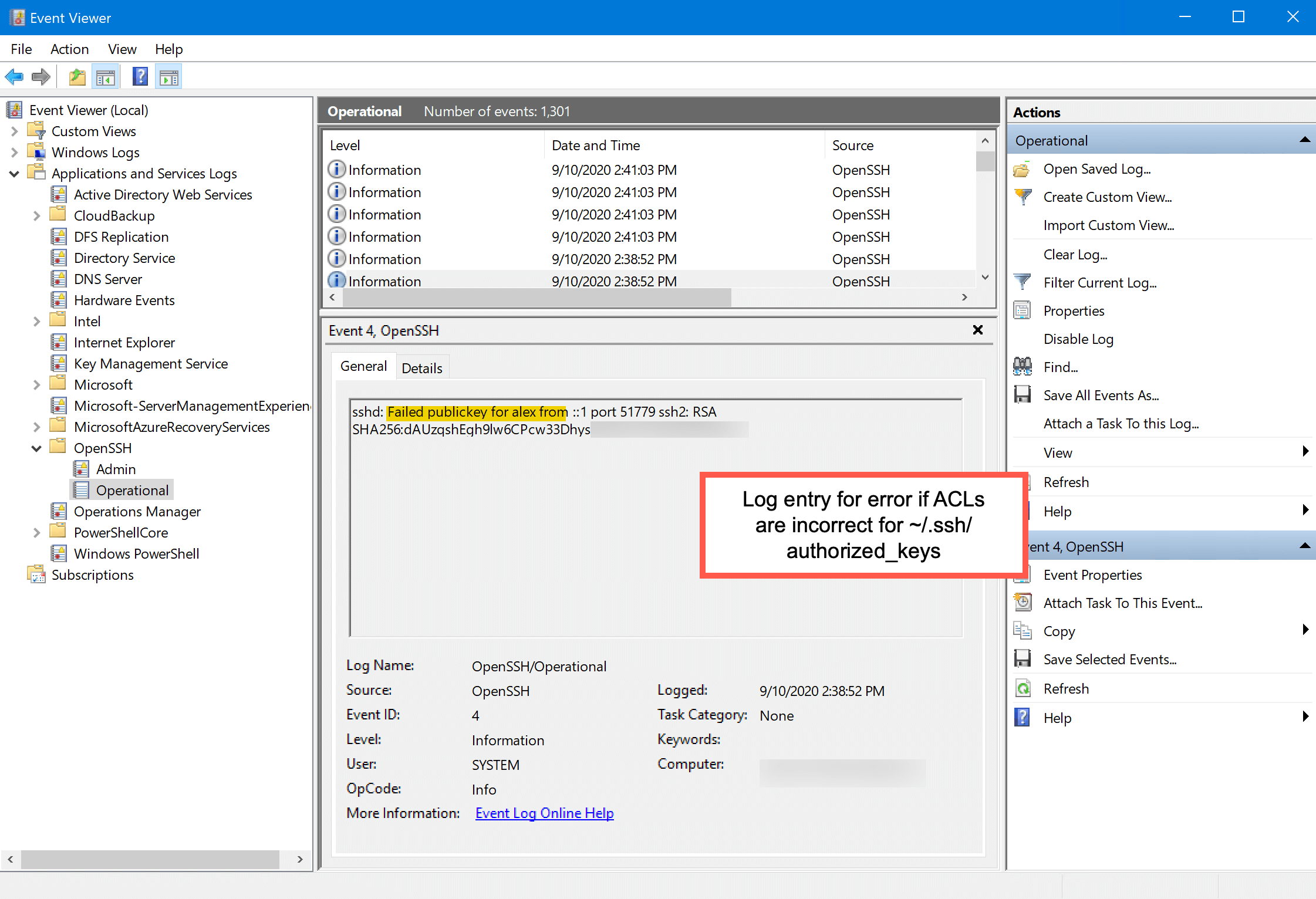
- OPENSSH KEYS HOW TO
- OPENSSH KEYS CRACKED
- OPENSSH KEYS INSTALL
- OPENSSH KEYS FULL
- OPENSSH KEYS WINDOWS 10
The user will be prompted for the passphrase during authentication. Multi-factor authentication may be implemented with key pairs by entering a passphrase when the key pair is generated (see user key generation below). If the server-side public key can't be validated against the client-side private key, authentication fails. Key based authentication enables the SSH server and client to compare the public key for a user name provided against the private key. The public key is what is placed on the SSH server, and may be shared without compromising the private key. If someone acquires your private key, they can sign in as you to any SSH server you have access to. The private key files are the equivalent of a password, and should stay protected under all circumstances. SSH public key authentication uses asymmetric cryptographic algorithms to generate two key files – one "private" and the other "public". Key pairs refer to the public and private key files that are used by certain authentication protocols. If you're unfamiliar with SSH key management, we strongly recommend you review NIST document IR 7966 titled "Security of Interactive and Automated Access Management Using Secure Shell (SSH)".
OPENSSH KEYS HOW TO
This document provides an overview of how to use these tools on Windows to begin using key-based authentication with SSH.
OPENSSH KEYS WINDOWS 10
Please note that the public key (.PUB) will also be saved in the same location.Applies to Windows Server 2022, Windows Server 2019, Windows 10 (build 1809 and later) If you leave it blank, then the location of your private key file will be /home/youruser/.ssh/id_rsa. You will be prompted to type in the location where you would like to save the private key.

Open your terminal and execute the following command to generate the SSH key pair.Ģ. Next, follow the instructions below to generate an SSH key pair.ġ.
OPENSSH KEYS INSTALL
This will install all the required packages for you. You should not need to install anything, yet if you are running Linux (specifically any Debian based OS such as Ubuntu), and you have problems invoking the underneath commands, we recommend executing the following commands in the terminal: The process to generate your SSH key pair is similar to Linux and macOS, since both operating systems originate from a Unix-based variant. SSH Keys - Generate SSH Key Pair on Linux/macOS Leave PuTTYgen open and move to add your public key to the server.
OPENSSH KEYS FULL
SSH Keys - Generating an SSH Key Pair on Microsoft Windowsįor the purpose of this demonstration, we are using a free third-party tool called PuTTYgen (We recommend you download the full installer and install the entire Putty Suite package). Please note that the Master user has SSH access enabled by default however, you need to manually enable SSH access for the application user(s).

The process of generating the SSH key pair is different on Windows and Linux/macOS. You can also enhance security by adding the passphrase to your SSH key pair.įirst of all, you need to generate the SSH key pair and then add those to the server. When both keys match up, you can log in to your server without the need for a password. The public key is placed on the server and the server is connected via an SSH client which already has a private key configured. Generating the SSH key provides you with a pair of keys a public key and the private key. In this article, you will learn how to connect to your application using the SSH Keys on Windows and Linux/macOS. SSH keys are very hard to decipher with these attacks.
OPENSSH KEYS CRACKED
SSH key pairs offer a more secure way of logging into your server than a password that can easily be cracked with a dictionary and brute force attacks. Alternatively, you can also connect to your application using the SSH keys, also known as Password-less SSH. You can connect to your application using the username and password, which is the traditional and commonly used method.


 0 kommentar(er)
0 kommentar(er)
